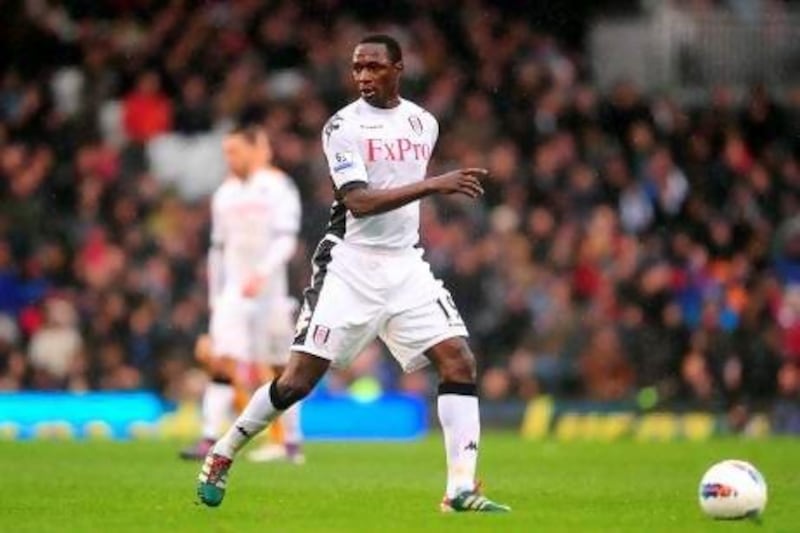It was about a decade ago that Mahamadou Diarra became a household name in European football. Scouts sent to the 2002 African Cup of Nations in Mali returned wide-eyed and thrilled by the muscular, alert and apparently tireless player who represented the host country with great distinction.
The 20-year-old Diarra, whose modish braids seemed to add to the impression of non-stop effervescence created by his high-energy game, looked to have everything required of the modern midfielder: he was tall, and because he was of West African origin, following the fashion of the time, he was labelled the next Patrick Vieira.
He would not the first or the last to be dubbed like that, but he appeared the genuine article. How might he be recruited, the scouts wondered? Sharper-eyed talent-spotters had got there first.
In the 21st century it is rare that such a special diamond, even if he has emerged from somewhere as remote from the game's commercial epicentre as landlocked Mali, has not been contracted by a club from Europe in his teens. Before the 2002 African Cup of Nations, Diarra had stood out for Mali's juniors at the World Under 20 Championship in Nigeria in 1999.
By then he was employed in the relative backwater of Greek football, with Crete. Sometimes the cleverest scouts come from unexpected places. By the time of the 2002 cup, Vitesse Arnhem, of Holland's Eredivisie, had him on their books. Martin Jol, his current manager at Fulham and a Dutchman who was working in the Netherlands at the time, remembers him from then.
But the 2002 Cup of Nations was still a spring board to a career of soaring successes, which put into stark relief the situations in which Diarra has found himself in the past 18 months: training with youth teams, unemployed.
To that period we will return. First, the halcyon years. Between 2002 and 2008, trophies seemed to come to "Djila", as his friends and colleagues call him, as if he was a magnet for silverware. He joined Lyon in the summer after his debut Cup of Nations, and embarked on a sequence of French Ligue 1 titles that would not be interrupted.
Lyon were a club whose better players tended to be headhunted often. When Michael Essien left them for Chelsea, Diarra imposed himself so well in their midfield that the absence was bearable. When Edmilson, another central midfielder, moved on to Barcelona, Diarra's excellence, and ability to cover in defence, compensated.
With the masterly Malian setting the tempo as well as breaking up attacks, Lyon never finished a season anything other than at the top of the league. "He was a great player for OL," remembers Gerard Houllier, "and a real leader in the dressing room too."
After four French titles, Diarra wanted to broaden his horizons. He would become feisty about it, insisting Lyon let him to go to the club who had made him their chief target in the summer transfer window of 2006. They were Real Madrid.
"He is my No 1 priority," announced Real's incoming head coach Fabio Capello. That summer Real signed Ruud van Nistelrooy, one of the greatest goalscorers of his generation, and Fabio Cannavro, who had just captained Italy to the World Cup. Diarra was more costly than either, at nearly €26 million (Dh124.8m).
In the final match of his debut season, Diarra scored one of the goals that won Real the league. His aerial ability at set pieces - the goal came that way - had become a conspicuous asset, and gave him something more than the former Real midfield totem, Claude Makelele - with whom he was by now being compared - had ever offered.
He had Makelele's capacity to dominate the middle third of the pitch, but he was more of a threat in the opposition penalty box. In 2007/08, Diarra collected his second successive league title with the Spanish club, his sixth championship on the trot.
Yet two-and-half years later, at only 29, he was no longer wanted by Real. The reasons? Setbacks with injury, especially with his knee. Jose Mourinho, who had hired Sami Khedira for the enforcer's role, let Diarra go to Monaco, for free, just over a year ago. He was unable to prevent the French club's relegation. Out of contract, he nearly rejoined Lyon last summer: his former employers were concerned about his fitness, and gasped at the salary he asked for.
So, last month, Fulham took a punt. Jol had his fitness monitored closely, he said. The Fulham manager acknowledged that the all-action Diarra of 10 years ago may not be seen again over 90 minutes, but that the poised, powerful, tactically wise 30 year old could have plenty of influence.
Diarra made his Premier League debut last weekend, a happy one. Fulham won 5-0 against Wolverhampton Wanderers and, as a substitute, set up, with a fine pass, one of the goals.






